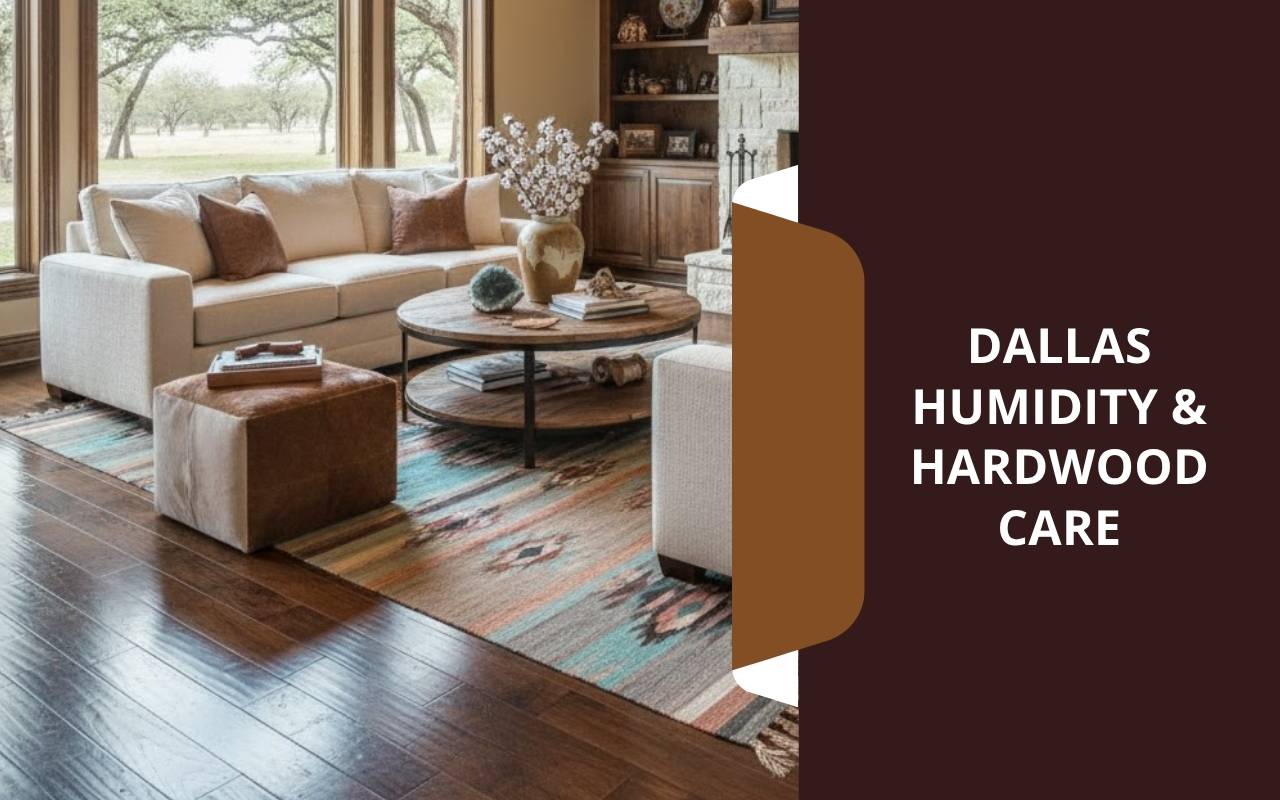
Dallas Humidity & Hardwood Care
Master the art of maintaining your Dallas hardwood floors. Tackle challenges with clear, simple care steps. Dallas Hardwood Humidity changes through the year and can stress wood. Knowing the ideal humidity for wood floors helps protect beauty and life. Small swelling or gaps can grow into repairs. Learn key tips to guard your investment in any season.
Seasonal shifts shape the air inside your home. These shifts change how wood behaves. By understanding how moisture moves, you can prevent floor gaps and cupping. Dallas Hardwood Humidity knowledge helps you keep floors stable. This guide shares practical steps for a stunning, resilient floor. You can win against Dallas’s tricky climate with daily habits.
Understanding Dallas Humidity Levels
Dallas swings from sticky summer mornings to dry winter nights. Summer air often rises above 70% humidity. Wood absorbs that moisture and expands. In winter, humidity can fall below 30%. Planks shrink and contract. This constant cycle makes Dallas Hardwood Humidity a real concern. Use a simple indoor hygrometer to watch changes and act early.
Peak moisture risk: May through September.
Drier spells: November to February.
Track indoor levels weekly.
Impact of Humidity on Hardwood Floors
High moisture makes planks expand sideways. Dry spells pull them inward. Joints feel that push and pull. Over time, movement creates visible issues. Dallas Hardwood Humidity drives these changes.
Early signs include small gaps and uneven boards. If ignored, problems grow. You may see cupping, where edges lift, or warping. Understanding these patterns lets you step in sooner and protect structure.
Ideal Humidity Range for Wood Floors
Keep indoor humidity between 40% and 60% all year. This range prevents extreme swelling and drying. It maintains a healthy balance. That ideal humidity for wood floors reduces gaps, cupping, and cracks. It also preserves color and finish in Dallas homes.
Summer: run air conditioning or a dehumidifier.
Winter: add a small humidifier in living areas.
Verify weekly with a reliable hygrometer.
Signs of Humidity Damage on Hardwood
Watch for small cracks, slight buckling, or cupped edges. These show up first where swings are strongest, like kitchens and baths. Irregular plank height and noisy creaks are other clues. Spot issues early to avoid larger fixes caused by Dallas Hardwood Humidity.
Edges higher than centers.
Frayed or rough joints.
Wider gaps after cold fronts.
Acclimation Tips for Dallas Homes
Before installing new wood, let it adjust to your rooms. Store unopened boxes in the space for at least 72 hours. Use acclimation tips Dallas homes rely on to avoid size changes after install.
Open a few boxes and stack with spacers for airflow.
Keep HVAC at normal settings during acclimation.
Measure Dallas Hardwood Humidity before nailing boards.
Preventing Floor Gaps and Cupping
Stopping damage is easier than fixing it later. Seal gaps around windows and doors. Use quality HVAC filters to reduce indoor moisture swings. Regular checks keep levels steady and safe.
Check a digital gauge weekly; target 40–60%.
If above 60%, run a dehumidifier to prevent cupping in humidity.
Use doormats to limit tracked-in moisture.
Seasonal Maintenance Strategies
Adjust care with the seasons. In spring and summer, fight extra moisture. In fall and winter, add gentle humidity. Clean dust to avoid scratches. Act fast when you notice spaces.
Warm months: use AC, dehumidifiers, and entrance mats.
Cool months: run a humidifier and monitor gaps.
Use filler sticks to fix seasonal floor gaps when needed.
Humidity Control Techniques for Hardwood
Consistent control is the foundation of care. A good humidistat automates devices at set points. It reduces daily checks and stabilizes Dallas Hardwood Humidity without hassle.
Install exhaust fans in baths and laundry rooms.
Add plants like peace lilies to absorb moisture.
Use targeted room dehumidifiers for basements.
Professional Maintenance Services for Hardwood Floors in Dallas
Deep cupping or large gaps may need experts. Certified techs can sand, refinish, replace boards, and add barriers. Ask about humidity experience and sealant brands. For new projects, explore hardwood floor installation. Refresh worn finishes with hardwood floor refinishing. Ready to talk? Visit our contact page.
Frequently Asked Questions
What is the best indoor humidity range for hardwood?
Keep it between 40% and 60% to limit movement and surface stress.
How can I monitor humidity at home?
Use a digital hygrometer and place it in a central room for stable readings.
Do I need to acclimate engineered wood?
Yes, though it may need less time. Always follow manufacturer guidance.
How do I reduce cupping in summer?
Run AC and a dehumidifier, and increase airflow with fans.
When should I call a professional?
Call when gaps are large, boards are buckled, or movement returns after adjustments.
Mastering Hardwood Care in Dallas
Stay aware of seasonal shifts and act early. Monitor moisture, acclimate new wood, and schedule upkeep. Whether you do small fixes or hire help, Dallas Hardwood Humidity control keeps floors beautiful and strong all year.